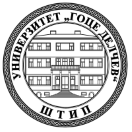LEGAL ETHICS IN THE UNITED STATES ELABORATED THROUGH THE PRISM OF ABA MODEL STANDARDS

The judiciary is an area that has at its center some of the most fundamental values, such as justice and fairness … It makes decisions for some of the most important human rights and freedoms, it influence on parts of human life that are essential … Therefore, it is more than important the ethical conduct of all persons involved in the practising of the law.
The American legal profession is said to be experiencing drastic and rapid development. According to statistics, the number of today’s lawyers in the United States has never been higher. In the 1950s the number of lawyers and judges was about 176,000, in 1970’s -260,000, in 1987-707,000 … But such an increase in the legal profession is not just a percentage. The presence of lawyers is increasingly exposed to the public, and the media … This only increases the pressure on their legal ethics. But the point of view is in common: Lawyers should have better ethics.
From the narrative rules, through ABA’s Canons 1908, to the Model Code of Professional Responibility, to The Model Rules of Professional Conduct, we can see that the effort, the intention to preserve the essence of ethics has always been present, but the way it is expressed is drastically changed … … In fact, designing an appropriate document and implementing it has proved a bit problematic.
This paper will elaborate on the above mentioned three most relevant documents adopted by ABA (American Bar Association) in order to understand the (r) evolution of the regulation of legal ethics in the United States. A short briefing will also be given on disciplinary measures for misconduct and the “channels” through which it is implemented. The analysis will end with the opening of the question, what about the legal ethics in the digital age? How do states face and how can they deal with this new challenge?
Keywords: ethics, codes, behavior…
